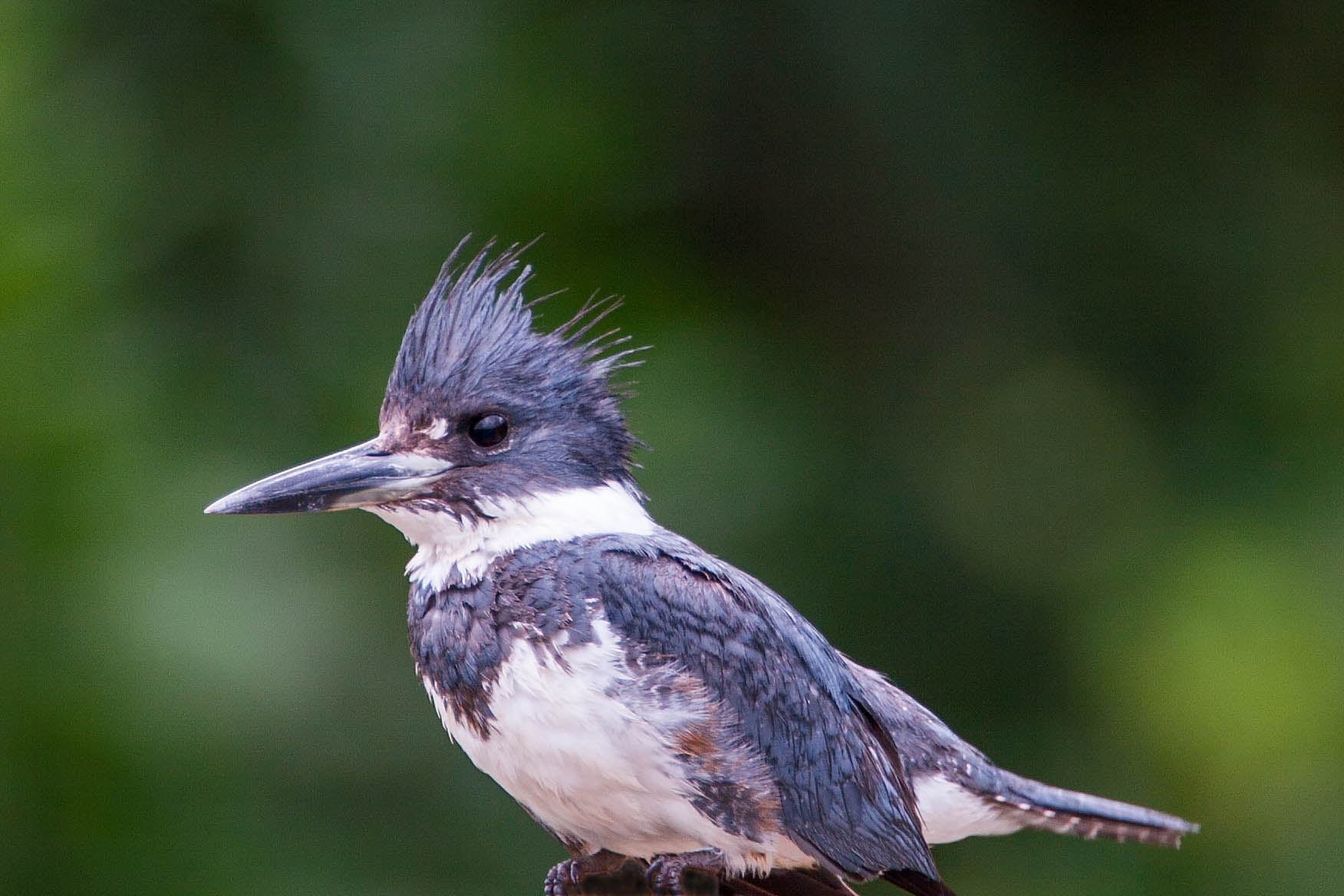The Belted Kingfisher is a unique and fascinating bird that can be found in North and Central America, as well as parts of South America. With its distinctive appearance and behavior, the Belted Kingfisher is a popular subject for birdwatchers and nature enthusiasts alike.
Appearance:
The Belted Kingfisher is a medium-sized bird, with an average length of 12-13 inches and a wingspan of 20-24 inches. It has a stocky build, with a large head and a long, thick bill that is perfectly adapted for catching fish. The bird's most distinctive feature is its bold blue and white plumage, with a striking blue band across its chest and a crest of feathers on its head. Females also have an additional rusty-colored band below the blue chest band.
Behavior:
As its name suggests, the Belted Kingfisher is an expert fisherman, and its diet consists primarily of fish. It can be found near bodies of water, such as streams, rivers, and lakes, where it perches on a branch or other vantage point to scan the water for potential prey. When it spots a fish, the Belted Kingfisher dives headfirst into the water, using its bill to grasp the fish and carry it back to its perch to consume. This behavior can be quite dramatic to witness, and the sound of the bird's distinctive rattling call can often be heard near bodies of water.
Habitat:
Belted Kingfishers can be found in a variety of aquatic habitats, including freshwater and saltwater environments. They typically nest in burrows dug into steep, earthen banks near bodies of water, and they are solitary birds, only coming together during breeding season. During the winter, some Belted Kingfishers will migrate south, but others will remain in their breeding grounds year-round.
Conservation:
The Belted Kingfisher is not currently considered threatened or endangered, but it is still important to protect its habitat and the aquatic ecosystems it relies on for survival. Pollution, habitat destruction, and overfishing can all have a negative impact on the Belted Kingfisher population, and efforts to preserve and restore these environments are crucial for their survival.
Conclusion:
In conclusion, the Belted Kingfisher is a fascinating bird with a distinctive appearance and behavior. Its expert fishing skills and rattling call make it a popular subject for birdwatchers and nature enthusiasts, and its presence near bodies of water serves as a reminder of the importance of protecting these environments. If you have the opportunity to observe a Belted Kingfisher in the wild, take a moment to appreciate this unique and impressive bird.


Comments
Post a Comment